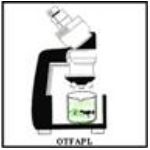AGLS 6502 Lecture 14.1 - Animal Production and Physiological States
1. to be able to describe the factors affecting animal production per se ;
2. to be able to describe how these factors affect the management of wild or non-domesticated animals reared in captivity;
3 to be able to apply the knowledge of these factors to the development of intensive animal production systems for non- domestic species reared in captivity;
4. to become familiar with some approaches at developing intensive species production modeling;
5. to become familiar with some rationale behind intensive or semi-intensive wildlife production/farming;
6. to be able to explain the threats to wildlife and wildlife farming in Latin America and the Caribbean, and to be able to explain some of the alternative solutions;
7. to be able to explain the value placed on Wildlife worldwide.
14.2 How is this Unit Organized?
In this unit we would first attempt to establish the philosophical basis used in approaching animal production. This is based on two pillars:
- an understanding of the factors affecting animal production, and
- the physiological states of the animal species in question.
What needs to be noted is that there is an interaction between the above two; and this interrelationship will determine the nature of the production system. The reason for this is that at each physiological state the effect of each factor is different OR the needs of and the threats to the animals’ survival are different.
We would then proceed to discuss the items under each of the objectives outlined.
14.3 Factors Affecting Animal Production
There are five (5) factors affecting the production of any animal species. They are:
Biological Factors
1) Nutrition and Feeding
2) Breeding and Reproduction
3) Health and Disease
Economic Factor
4) Economic and Socio-economic
Environmental Factor
5) Housing and Environment: Comfort needs
14.4 The Effect of the Factors Affecting Animal Production on Wild Animals Reared in Captivity
In the wild the animals live within a habitat. In this habitat:
- they have a place to live and are kept comfortable (housing )
- they get their food ( nutrition and feeding )
- they are able to make their nests or reproduction sites for caring for their young and they are able to locate suitable mates ( breeding and reproduction)
14.5 What is “a” or “ the” Physiological State of an animal?
Before we attempt a definition it is essential that we first put the in question into perspective. To begin with we would first need to know the following about the animal:
- the species
- its’ sex
- is it in early growth?
- is it in late growth?
- is it undergoing puberty or undergoing the changes necessary for going into the reproductive phase of life?
- is the animal being prepared for reproduction?
- what is its’ reproductive state?
- what is its’ productive state ( or growth state or desired growth rate)?
- is it a working animal and what type of work is it doing ?
- what is the weight of the animal?
The physiological state of an animal can be seen therefore as a description of an individual animal or animals within a similar, within a species, from the standpoint of their stage in their life cycle or productive state.
This would then indicate to the animal manager or production facility developer what the animals’ needs would be for:
- Nutrients
- Housing and environmental comfort
- Disease prevention
- Reproductive management and
- Marketing the animal products.
- they are free to move within their habitat and are able to avoid diseases and predation ( disease prevention and control ) .
Why would the nutrient needs of ruminant animals change at different physiological states?
Each physiological state of an animal creates different types of demands for the animals’ comfort, well-being, and productive capability. This is in response to the animals’ immediate needs for maintenance , growth and reproduction.
Therefore when wild animals are kept in captivity all of the above has to be supplied, so that the captive rarer now has to ensure that all the functions performed by the habitat will now be met by the new captive environment.
Readings:
Wood, A.; Garcia, G. W. and Osuji, P. O. (1983):
"Relevant feeding systems for beef and milk production in the Caribbean". In: Feeding of Animals in the Caribbean (Proceedings of a Workshop sponsored jointly by CARDI and SFC - April 11-16, 1983)edited by F. Neckles, W. Cateau, and D. Walmsley. UWI Faculty of Agriculture, St. Augustine, Trinidad & Tobago. pp. 73-81
